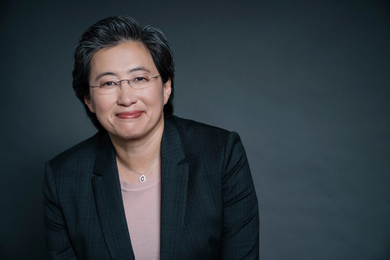MIT Professor Franco Modigliani, who won the Nobel Prize in economics in 1985 for his pioneering analyses of savings and financial markets, died today in his sleep at his home in Cambridge, Mass. He was 85 years old.
Modigliani and an associate, Merton Miller, concluded that the market value of a company had no genuine relationship to the size and structure of its debt. Instead, they found, stock market values are determined mainly by what enterprises are expected to earn in the future.
MIT Institute Professor Paul Samuelson, a friend and fellow Nobelist, said,"Franco Modigliani could have been a multiple Nobel winner. When he died he was the greatest living macroeconomist. He revised Keynesian economics from its Model-T, Neanderthal, Great Depression model to its modern-day form."
Samuelson noted that Wall Street was populated with numerous experts who had studied with Modigliani. His students also included Nobel laureate Robert Merton, the 1997 winner.
"He was a great teacher, intense and colorful," Samuelson said. "MIT was lucky to have him for 40 years; he was a jewel in our crown, active to the end."
Modigliani was known for his work on corporate finance, capital markets, macroeconomics and econometrics. He had appointments in MIT's Department of Economics and the Sloan School of Management.
"Franco was a giant among economists and played a decisive role in the intellectual development of corporate finance," said Dean Richard Schmalensee of the Sloan School.
"His legendary enthusiasm and intensity never flagged. He inspired generations of students and colleagues with his passion for using economics to benefit society. Everyone who knew him will miss him."
Dean Philip Khoury of the MIT School of Humanities, Arts and Social Sciences said, "Franco Modigliani was an elder statesman among economists. He was always surrounded by young scholars and researchers whom he loved to engage with on the major economic and social issues of the day."
Modigliani, who joined the MIT faculty in 1962, had degrees from the University of Rome and the New School for Social Research in New York City. He taught and did research at several universities before joining the faculty at the Carnegie Institute of Technology in 1952. He came to MIT 10 years later as a professor of economics and finance and in 1970 was named an Institute Professor, an appointment MIT reserves for scholars of distinction. He became professor emeritus in 1988.
Modigliani received MIT's James R. Killian Faculty Achievement Award in 1985. The Modigliani Professorship of Financial Economics, an endowed chair, was established in 1995.
Born on June 18, 1918, Modigliani was the son of a pediatrician and a volunteer social worker. Modigliani, who is Jewish, met his future wife, Serena Calabi, through his involvement with student anti-Fascist activists in the early 1930s. When the Italian racial laws were passed in 1938, he joined the Calabi family in Paris, where he and Serena were married. They came to the United States in August 1939.
Active and involved until the end, Modigliani enlisted fellow MIT Nobel laureates in economics, Samuelson and Robert M. Solow, to collaborate on a letter published in the New York Times on Sept. 23. In the letter, they chided the Anti-Defamation League for honoring Italy's prime minister, Silvio Berlusconi, who had been quoted as saying that "Mussolini did not murder anyone."
They said, in part: "Mussolini was responsible for the death of many political opponents, partisans and Jews. He persecuted Jews with his racial laws and ... was responsible for the deportation of almost 7,000 Jews, who died in Nazi camps.
"Mr. Berlusconi has apologized to Italian Jews for his statements. This is not enough; he has not apologized to Italians generally."
Modigliani was a member of the National Academy of Sciences and the American Academy of Arts and Sciences. He also served as president of the Econometric Society, the American Economic Association and the American Finance Association. He served as a consultant to the U.S. Treasury, the Federal Reserve System and a number of European banks.
A slight, gregarious man, Modigliani enjoyed skiing, tennis and sailing. He used some of his $225,000 Nobel Prize money to upgrade his laser-class sailboat. He often played tennis with Samuelson.
"On the day he won the Nobel, we played doubles," Samuelson recalled. "An intense tennis player, he never stopped moving. He was so intense, he once ran into a cement wall trying to get the ball." Samuelson's wish to collaborate with Modigliani came to fruition on a tennis court. "One day, between serves, he asked me what I thought of a new theory," Samuelson said. "I admitted I hadn't heard of it. He explained it. We kept playing. I responded. Our collaboration was born right there."
Besides his wife, Modigliani is survived by two sons: Andre, a professor of sociology at the University of Michigan, and Sergio of Brookline, Mass., an architect; four grandchildren and three great-grandchildren.
Donations in Modigliani's memory may be made to the American Friends Service Committee, 1501 Cherry St., Philadelphia, PA 19102. The funeral services will be private. A memorial will be scheduled.






